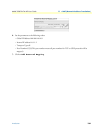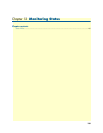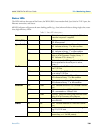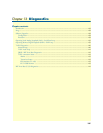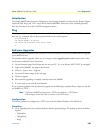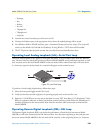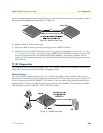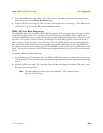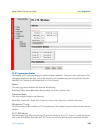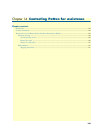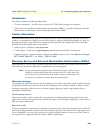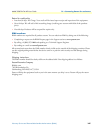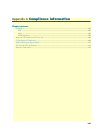
T1/E1 Diagnostics 142
Model 3086FR ATM IAD User Guide 13 • Diagnostics
1. Go to the 3086FR Main page, select E1/T1. Next, click on Test Modes, select local Loop using the drop
down menu, click on the
Activate Test Mode
button.
2. Perform a BER (bit error rate) test. This test can be initiated from the far end using a T1/E1 BER tester to
verify the T1/E1 path over the DSL line and 3086FRs involved.
QRSS—BIT Error Rate Diagnostics
The 3086FR/K offers a Bit Error Rate (BER) QRSS test pattern. This test pattern may to be used to test the
communication link and the T1/E1 interface of the device attached to the 3086FR. When a QRSS test is
invoked, the 3086FR generates a pseudo-random pattern using a mathematical polynomial. The pattern is sent
over the T1/E1 interface to the far end device and looped to the 3086FR (originator), the far end device i.e.
PBX or routers’s T1/E1 port must be set to line loop. The local 3086FR decodes the received bits using the
same polynomial. If the received bits match the agreed upon pseudo-random pattern, then the 3086FR and
the communication link are functioning properly. The 3086FR can also initiate a built-in QRSS pattern with
errors. This test pattern generator injects intentional errors approximately once per second in the transmitted
stream.
To perform a BER test, follow these steps:
1. From the Main page T1/E1 option, select the QRSS or QRSS Errs option, and then click on the Activate
Test Mode button. This will start the internal test pattern generator for data sent and looped at the far end
device.
2. Monitor the BER test results. The Test Mode Status window will display the number of bit errors, if any,
detected in the received stream.
Note
The above BER tests will not work if the 3086FR’s T1/E1 interface has been
placed in Network loop.



